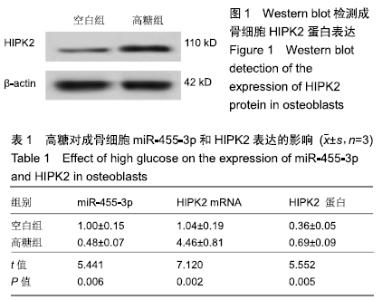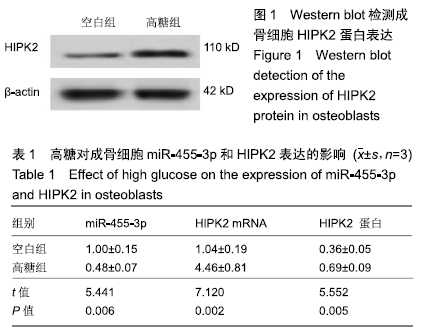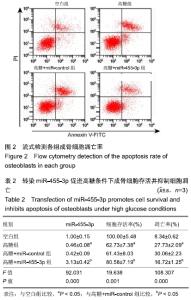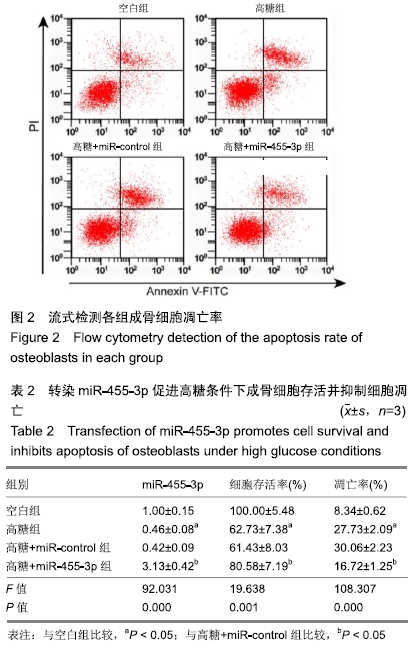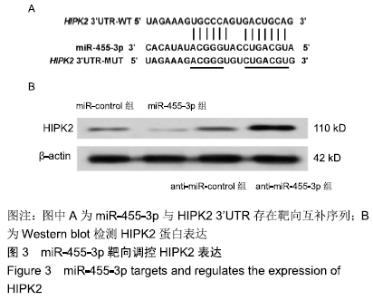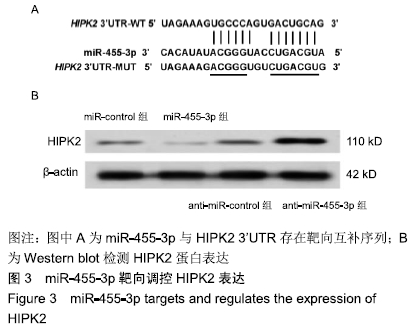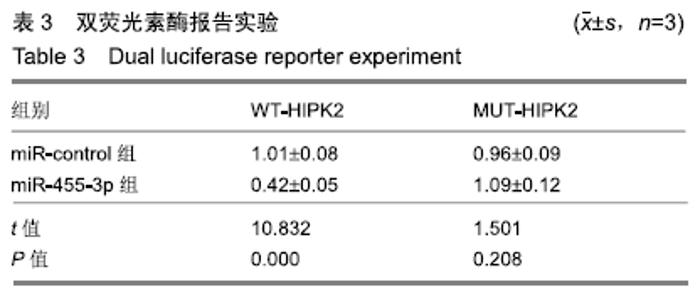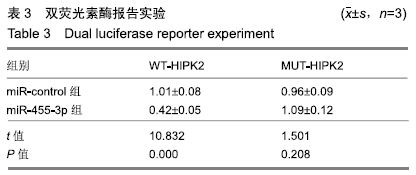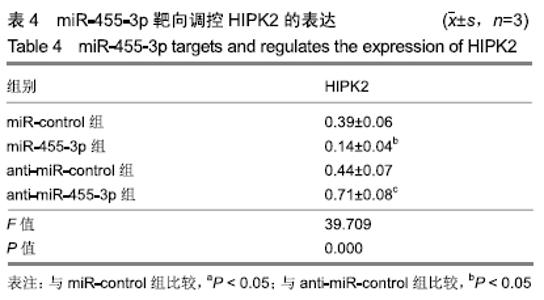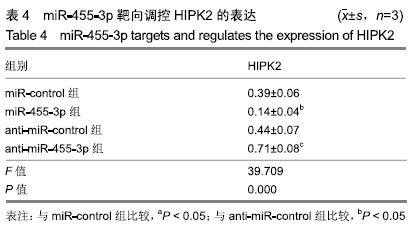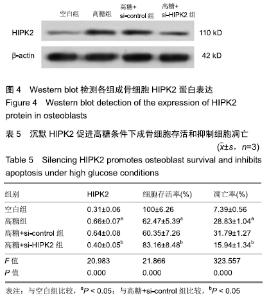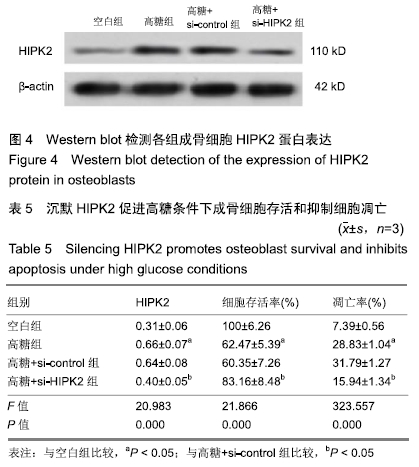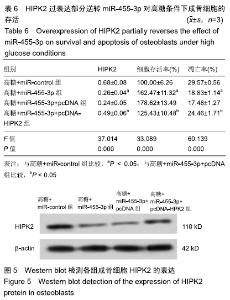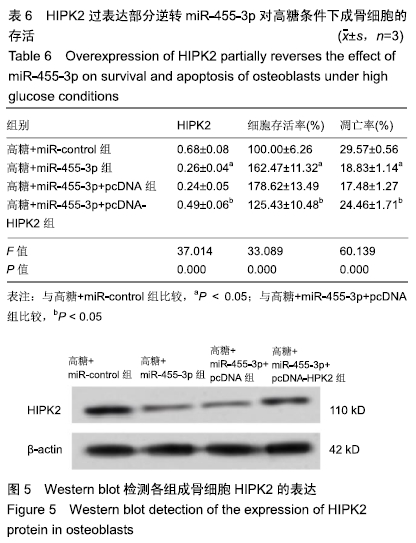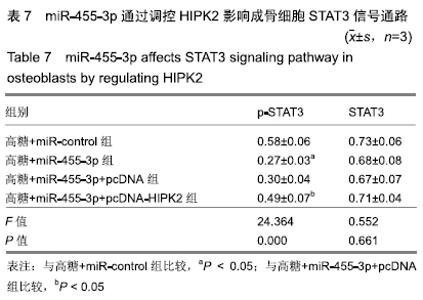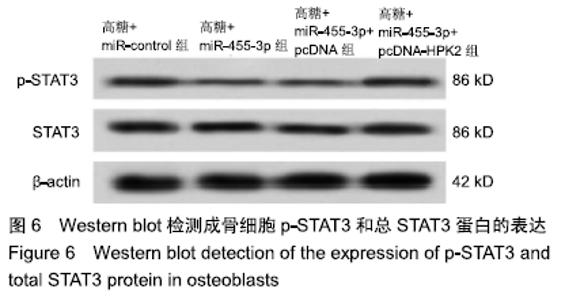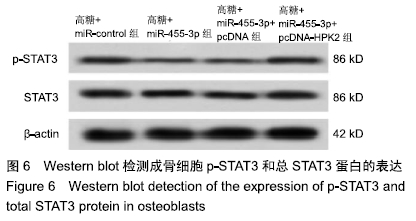[1] WITTRANT Y, GORIN Y, WOODRUFF K, et al. High d(+)glucose concentration inhibits RANKL-induced osteoclastogenesis. Bone. 2008;42(6):1122-1130.
[2] BOUILLON R. Diabetic bone disease. Calcif Tissue Int. 1991;49(3): 155-160.
[3] 王欢,王允山,吉爱国.同源结构域相互作用蛋白激酶2(HIPK2)研究进展[J].生命的化学,2014,34(2):257-261.
[4] ZHOU Y, LI S, CHEN P, et al. MicroRNA-27b-3p inhibits apoptosis of chondrocyte in rheumatoid arthritis by targeting HIPK2. Artif Cells Nanomed Biotechnol. 2019;47(1):1766-1771.
[5] HARADA J, KOKURA K, KANEI-ISHII C, et al. Requirement of the co-repressor homeodomain-interacting protein kinase 2 for ski-mediated inhibition of bone morphogenetic protein-induced transcriptional activation. J Biol Chem. 2003;278(40):38998-39005.
[6] LI Z, MENG Q, PAN A, et al. MicroRNA-455-3p promotes invasion and migration in triple negative breast cancer by targeting tumor suppressor EI24. Oncotarget. 2017;8(12):19455-19466.
[7] ZHAO Y, YAN M, YUN Y, et al. MicroRNA-455-3p functions as a tumor suppressor by targeting eIF4E in prostate cancer. Oncol Rep. 2017; 37(4):2449-2458.
[8] ZHANG S, WU W, JIAO G, et al. MiR-455-3p activates Nrf2/ARE signaling via HDAC2 and protects osteoblasts from oxidative stress. Int J Biol Macromol. 2018;107(Pt B):2094-2101.
[9] 冯正平,邓华聪,杜佳,等.不同浓度葡萄糖对成骨细胞凋亡的影响[J].重庆医科大学学报,2010,35(6):840-842.
[10] JACKULIAK P, PAYER J. Osteoporosis, fractures, and diabetes. Int J Endocrinol. 2014;2014:820615.
[11] MARIE PJ. Osteoblast dysfunctions in bone diseases: from cellular and molecular mechanisms to therapeutic strategies. Cell Mol Life Sci. 2015;72(7):1347-1361.
[12] DONG S, YANG B, GUO H, et al. MicroRNAs regulate osteogenesis and chondrogenesis. Biochem Biophys Res Commun. 2012;418(4): 587-591.
[13] LI J, FENG Z, CHEN L, et al. MicroRNA-335-5p inhibits osteoblast apoptosis induced by high glucose. Mol Med Rep. 2016;13(5): 4108-4112.
[14] CHEN Y, SUN C, LU J, et al. MicroRNA-590-5p antagonizes the inhibitory effect of high glucose on osteoblast differentiation by suppressing Smad7 in MC3T3-E1 cells. J Int Med Res. 2019;47(4): 1740-1748.
[15] GONG K, QU B, LIAO D, et al. MiR-132 regulates osteogenic differentiation via downregulating Sirtuin1 in a peroxisome proliferator-activated receptor β/δ-dependent manner. Biochem Biophys Res Commun. 2016;478(1):260-267.
[16] YOU L, GU W, CHEN L, et al. MiR-378 overexpression attenuates high glucose-suppressed osteogenic differentiation through targeting CASP3 and activating PI3K/Akt signaling pathway. Int J Clin Exp Pathol. 2014;7(10):7249-7261.
[17] ZHENG J, LIN Z, ZHANG L, et al. MicroRNA-455-3p Inhibits Tumor Cell Proliferation and Induces Apoptosis in HCT116 Human Colon Cancer Cells. Med Sci Monit. 2016;22:4431-4437.
[18] UJIFUKU K, MITSUTAKE N, TAKAKURA S, et al. miR-195, miR-455-3p and miR-10a( *) are implicated in acquired temozolomide resistance in glioblastoma multiforme cells. Cancer Lett. 2010;296(2): 241-248.
[19] ZHAO Y, YAN M, YUN Y, et al. MicroRNA-455-3p functions as a tumor suppressor by targeting eIF4E in prostate cancer. Oncol Rep. 2017; 37(4):2449-2458.
[20] 李济伶. miR-335-5p对高糖状态下成骨细胞功能的影响[D].重庆:重庆医科大学,2015.
[21] BLAQUIERE JA, VERHEYEN EM. Homeodomain-Interacting Protein Kinases: Diverse and Complex Roles in Development and Disease. Curr Top Dev Biol. 2017;123:73-103.
[22] ZHANG N, TIAN L, MIAO Z, et al. MicroRNA-197 induces epithelial- mesenchymal transition and invasion through the downregulation of HIPK2 in lung adenocarcinoma. J Genet. 2018;47(1):47-53.
[23] TAN X, TANG H, BI J, et al. MicroRNA-222-3p associated with Helicobacter pylori targets HIPK2 to promote cell proliferation, invasion, and inhibits apoptosis in gastric cancer. J Cell Biochem. 2018;119(7): 5153-5162.
[24] LI R, SHANG J, ZHOU W, et al. Overexpression of HIPK2 attenuates spinal cord injury in rats by modulating apoptosis, oxidative stress, and inflammation. Biomed Pharmacother. 2018;103:127-134.
[25] 伊庆强,姜斌. STAT3信号通路与肝癌研究进展[J].医学综述,2015,21(1): 15-17.
[26] 从丽,陶林,赵瑾,等.p-Stat3与胃癌临床病理学关系研究[J].中华实用诊断与治疗杂志,2013,27(6):540-542.
[27] 王林,宋涛,王艳丽,等.p-STAT3在肝细胞肝癌中的表达及临床意义[J].肝癌电子杂志,2014,1(2):40-43.
|
